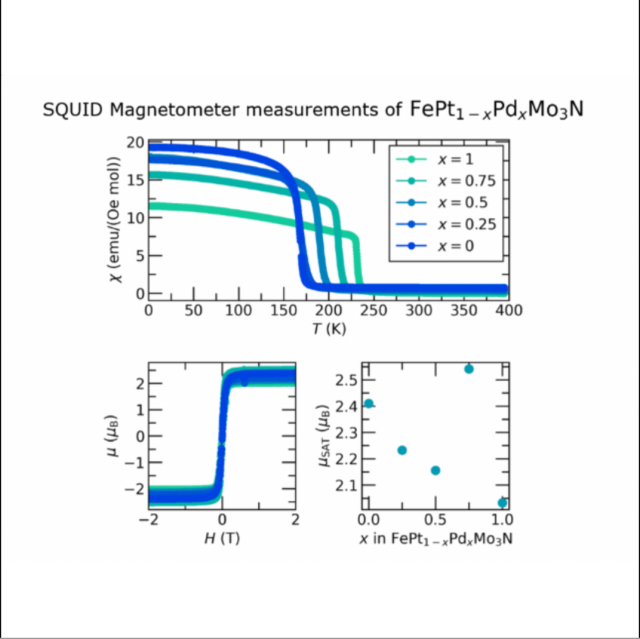Mentor
Linus Kautzsch - Materials Science
Advisor
Stephen D. Wilson - Wilson Lab, Materials Department
Magnetic Measurements using a Superconducting Quantum Interference Device (SQUID Magnetometer)
Interns
Yulin Liu - Physics (CCS)
Kimberly Munoz - Physics
Sebastian Nunez - Mathematical Sciences
Akshay Patel - Chemical Engineering

Project Description
The magnetic properties of some materials are employed in many applications for our daily lives. We use ferrites(containing Fe3O4) to stick a memory from our last vacation to the fridge, small magnets in the speakers of our phones, and much stronger neodymium-based magnets in electric motors. There are different types of magnetic materials;for example, some are called ferromagnetic and some antiferromagnetic. The ferromagnetic ones will stick to the fridge, the antiferromagnetic ones won’t, and some might have to be cooled down below room temperature to show magnetic behavior. In solid-state materials research, we study the behavior of known and new magnetic materials in greater detail, i.e., we explore what type of magnet a material is, at what temperature it becomes magnetic, and, for example, how strongly it would stick to a fridge.We use a so-called SQUID magnetometer, that employs a Superconducting Quantum Interference Device and can carry out extremely sensitive magnetic measurements at temperatures as low as 1.8K (-456 °F). In this project, we will learn the basics of magnetic materials, the working principle of a SQUID magnetometer, and how this device is used to carry out magnetic measurements.We will then analyze magnetic data collected from a series of 5 intermetallic nitride compounds and learn how to import, analyze,fit, and visualize the data collected with the instrument using the easy-to-learn programming language python. This project will be great for students that are interested in materials science/physics, would like to learn about a widely used technique to study magnetic materials,and about the use of python for working with measurement data.
